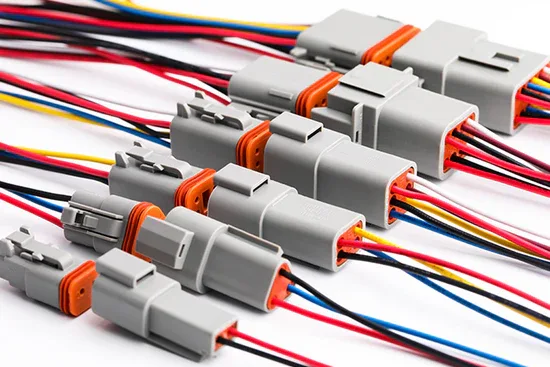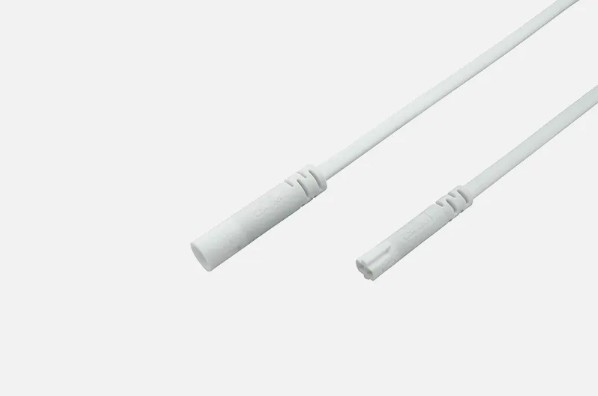Introduction
LED technology distinguishes out among current lighting systems due to its energy economy, endurance, and versatility. Proper installation, on the other hand, is critical for maximising LED performance. One key problem that engineers confront, particularly in long-distance installations, is voltage drop in LED extension cables.

Understanding the Voltage Drop in LED Extension Cables.
Voltage drop happens when a cable’s intrinsic resistance causes a decrease in voltage throughout its length. This issue is especially prominent in long-length installations, when the cable resistance contributes significantly to voltage drop.
To effectively reduce voltage drop, engineers must use a variety of approaches and best practices during the installation process.
Techniques to Mitigate Voltage Drop
Choosing an appropriate cable gauge and material
Choosing the appropriate cable gauge and material is a critical component in voltage drop reduction. The gauge of the cable influences its thickness and thus its resistance. In long-length installations, using a thicker gauge wire helps reduce resistance and voltage drop.
Engineers should consider conductivity and durability while deciding on a material. Copper is a popular choice due to its excellent conductivity, however aluminium cables can also be used for specific applications. Working with a respected Led extension cable manufacturer or supplier can provide significant insights into choosing the best cable for certain needs.
Voltage Drop Calculation and Planning
Before beginning an LED extension cable installation, it is critical to conduct voltage drop calculations and meticulous planning. There are several online calculators and formulas available for estimating voltage drop based on cable length, load requirements, and other considerations.
Accurate assessment of cable length and load ensures that the chosen cable gauge can withstand the voltage drop while retaining optimal LED performance. Engineers should also account for voltage loss across the full length of the installation to avoid unanticipated problems later on.
Working directly with skilled engineers or working with a Led extension cable maker can help to shorten the process and ensure precise estimates matched to the project’s specific requirements.
Implementation of Voltage-Boosting Devices
In some circumstances, particularly in exceptionally long-length installations, voltage-boosting devices may be required to successfully offset voltage drop. These equipment, such as voltage boosters or amplifiers, contribute to a steady voltage level across the LED extension cable network.
Voltage boosters work by increasing the voltage along the cable, compensating for any loss due to resistance. To guarantee best performance when integrating voltage boosters into an installation, engineers must carefully examine compatibility, positioning, and power requirements.
Collaborating with an experienced Led extension cable manufacturer or supplier can provide access to high-quality voltage boosting devices adapted to the project’s specific needs.
Best Practices for Long-Length LED Cable Installation
Proper Cable Routing and Management
Effective cable routing and management are critical to reducing voltage drop and extending the life of LED extension cables. Engineers should aim to reduce cable length and avoid severe bends or twists, which can increase resistance and exacerbate voltage drop.
Cable trays, clamps, and supports can help you organise your cables and keep them from sagging or becoming tangled. Engineers can optimise signal transmission and limit the likelihood of voltage drop issues by ensuring adequate cable tension and alignment.
Working with skilled installers or speaking with a respected Led extension cable manufacturer can provide helpful advice on cable routing and management in long-term installations.
Shielding and grounding Techniques
In addition to adequate cable routing, shielding and grounding techniques are critical for reducing voltage loss and ensuring the dependability of LED extension cable installations. Shielding reduces electromagnetic interference (EMI), which can impair signal transmission and cause voltage drop.
Grounding is equally vital for avoiding electrical risks and preserving signal integrity. Grounding the wires and accompanying equipment allows engineers to dissipate static charges and reduce the possibility of voltage fluctuations.
When adopting shielding and grounding solutions, engineers should follow industry best practices as well as appropriate standards and laws. Working with a reputable Led extension cable manufacturer or supplier assures compliance with these specifications while also providing access to high-quality shielding and grounding options.
Industry Standards and Regulations
Compliance with industry standards and regulations is critical to assuring the safety and dependability of LED extension cable installations. Various standards specify cable design, performance, and installation techniques to reduce voltage drop and other potential concerns.
Engineers should get acquainted with relevant standards, such as the National Electrical Code (NEC) and International Electrotechnical Commission (IEC) requirements for LED lighting systems. These standards cover issues like as cable insulation, temperature ratings, and ampacity, establishing criteria for safe and efficient installation.
Working with a reputed LED extension cable manufacturer or supplier guarantees that the cables fulfil industry standards and certifications, providing users confidence in their performance and compliance.
Conclusion
Mitigating voltage drop issues in long-length LED extension cable installations necessitates careful design, the use of appropriate materials, and compliance with industry best practices. Engineers can ensure that LED lighting systems work optimally and last a long time by studying the factors that contribute to voltage drop and using efficient mitigation measures.
Collaborating with skilled engineers and renowned Led extension cable manufacturers or suppliers can provide vital knowledge and access to high-quality solutions adapted to specific project needs. Users can install LED extension cables safely, reliably, and efficiently by according to industry norms and regulations.
In conclusion, addressing voltage drop issues in long-length LED extension cable installations is critical for maximising the benefits of LED technology and ensuring peak performance in a variety of lighting applications.



